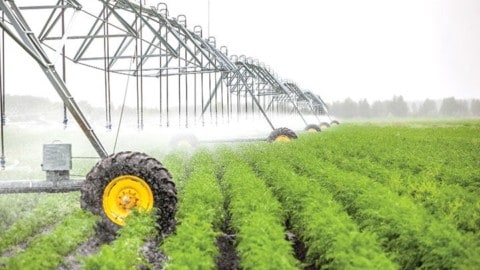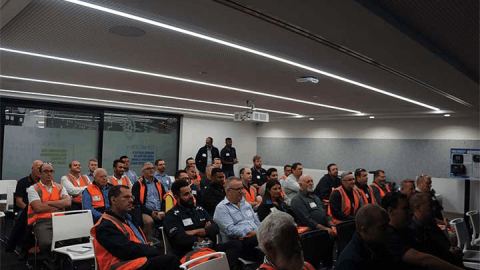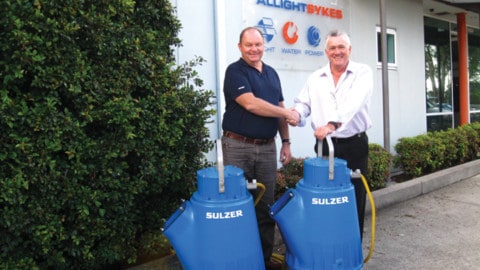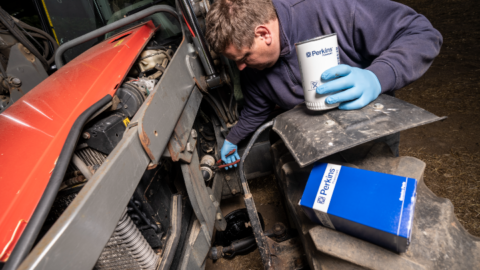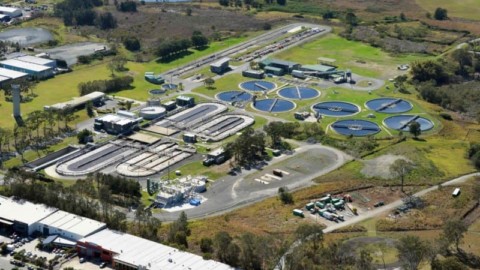The PIA’s Australian Pump Technical Handbook is a cornerstone text for the Australian pump industry and, in our opinion, a must have for anyone who deals with pumps on a regular basis. In this ongoing series, we feature abridged chapters from the classic book to showcase the various areas covered and to reacquaint readers with the technical aspects of pumps. In this issue, we continue to look at selecting and applying different types of slurry pumps.
Slurry head correction
A derating of pump total head is usually necessary because of the presence of solids in the slurry. Suction losses within the pump increase as the density of the slurry increases. Additionally, slip occurs between the transporting fluid and the solid particles as the slurry passes through the pump impeller, which produces an energy loss.
Due to the variability of slurries, pump manufacturers provide curves showing performance when pumping clear water. To select the appropriate pump and motor configuration using the manufacturer’s performance curve, the total head for slurry should be expressed in terms of equivalent water head.
Formulae have been developed for calculating correction factors for head and efficiency based on solids particle size and slurry specific gravity. These correction factors are applied to transform the required slurry head (or efficiency) into equivalent water values.
The slurry viscosity further affects the pump total head and hydraulic efficiency. Viscosity effects should be considered when calculating the equivalent water duty for slurry service.
The pump absorbed power derived for water is multiplied by the slurry specific gravity to calculate the power required to pump the slurry.
Installing slurry pumps
Pump speed reduction
The impeller materials used for slurry pumps (hard iron or elastomer lined) generally mean it is not feasible to reduce the impeller diameter to match the required duty point so that a pump can be run at the motor synchronous speed.
Slurry pumps generally run at slow speeds and it often becomes necessary to reduce the pump speed to below nominal motor speed based on the number of poles in the motor. This is commonly achieved through a wedge belt drive for transmitted power up to 350kW, or through a gearbox.
Variable speed drives are common in mining applications to handle variations in process flow. However, consideration of starting torque requirements and other factors need to be considered when selecting the driver.
Horizontal pump installation
The mounting and installation of horizontal slurry pumps are generally subject to a number of considerations, including floor space, overhead space for lifting and the likelihood of flooding from spills. Pumps in critical services are often paired in duty/standby mode so that maintenance can be carried out on one pump while the other is running.
Large pumps with high-energy motors — and perhaps with speed reduction gearboxes — would generally be mounted with the shaft axes in the same horizontal plane for ease of maintenance access.
A pump with a belt drive may have the motor mounted beside it if there is sufficient floor space. However, if floor space is limited or there is a risk of flooding, the motor can be mounted above it either directly overhead (also known as “C drive”) or to its rear (reverse overhead mounting or “Z drive”).
Vertical slurry pump installation
Vertical cantilever shaft sump pumps should be selected so that the suction inlet is close to the sump floor. If shaft length is limited by the required running speed and power to be transmitted, a suction pipe (generally two metres long) may be fitted to the suction branch to ensure the sump can be emptied.
Positive displacement slurry pumps
Positive displacement pumps are often more suitable than centrifugal slurry pumps when one or more of the following conditions or requirements apply:
- Low flow rate
- High head
- Improved efficiency is desired
- Dilution water is either expensive to provide, remove and/or dispose of
- High solids concentration
- High viscosity
- Flow control required
Many manufacturers have developed special versions of their positive displacement pumps for slurry services. As the nature of slurry and operating conditions are variable, it is not possible to provide concise selection procedures, so it is imperative to discuss your specific application with pump suppliers who have experience in pumping similar slurries.
Some of the important parameters of slurries to consider when selecting a pump include:
- Particle size, shape (angular, round, long and stringy) and hardness
- Corrosiveness
- Chemical compatibility with elastomers
- Solids concentration
- Likelihood of running dry
Previous experience with pumping similar slurries in your own plant or industry can provide an invaluable guide to share with potential suppliers.
Pump speed is generally reduced for slurry applications, however, care needs to be taken so that speeds are not so low that solids are able to settle in either the pump or piping.
Final selection can often be a tradeoff between high capital and low maintenance costs, or low capital and high maintenance costs.
Low flow, medium head applications
A wide range of positive displacement pumps can be considered for these applications, including:
- Progressive cavity
- Rotary lobe
- Peristaltic
- Air operated diaphragm (AOD)
Most suppliers can offer specialised designs and materials, and reduced operating speeds to extend the life of the pump depending on the abrasiveness of the slurry.
Capital cost is likely to be low or moderate.
Medium flow, high head applications
When the application exceeds the capabilities of the above pump types, it is often necessary to consider specialised mechanical or hydraulically driven piston, plunger, diaphragm and hose pumps. For abrasive slurries, these pumps use a variety of features to minimise abrasive wear, including:
- Continuous flushing of pistons and plunger seals with clean water or compatible flushing liquid
- Extended frames so that no part of the cylinder or plunger that is in contact with the slurry, contacts the sealing surfaces
- Combinations of hard surfaces and resilient surfaces
- Slow speeds and long strokes
- Slurry values with combinations of hard and resilient surfaces
- Design features to allow easy replacement of wear parts with minimum downtime
The capital cost of these pumps is likely to be very high.
Typical applications of various types of positive displacement pumps in mining and some industrial slurry applications can be seen in Table 1.

Table 1: Typical applications of various types of positive displacement pumps in mining and slurry applications.







